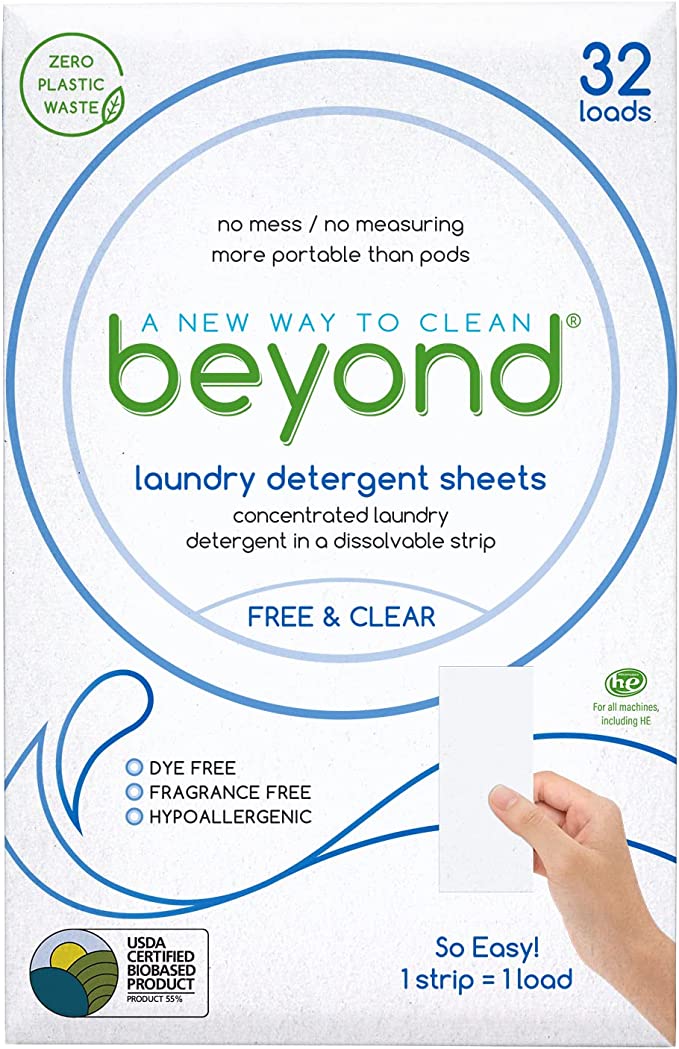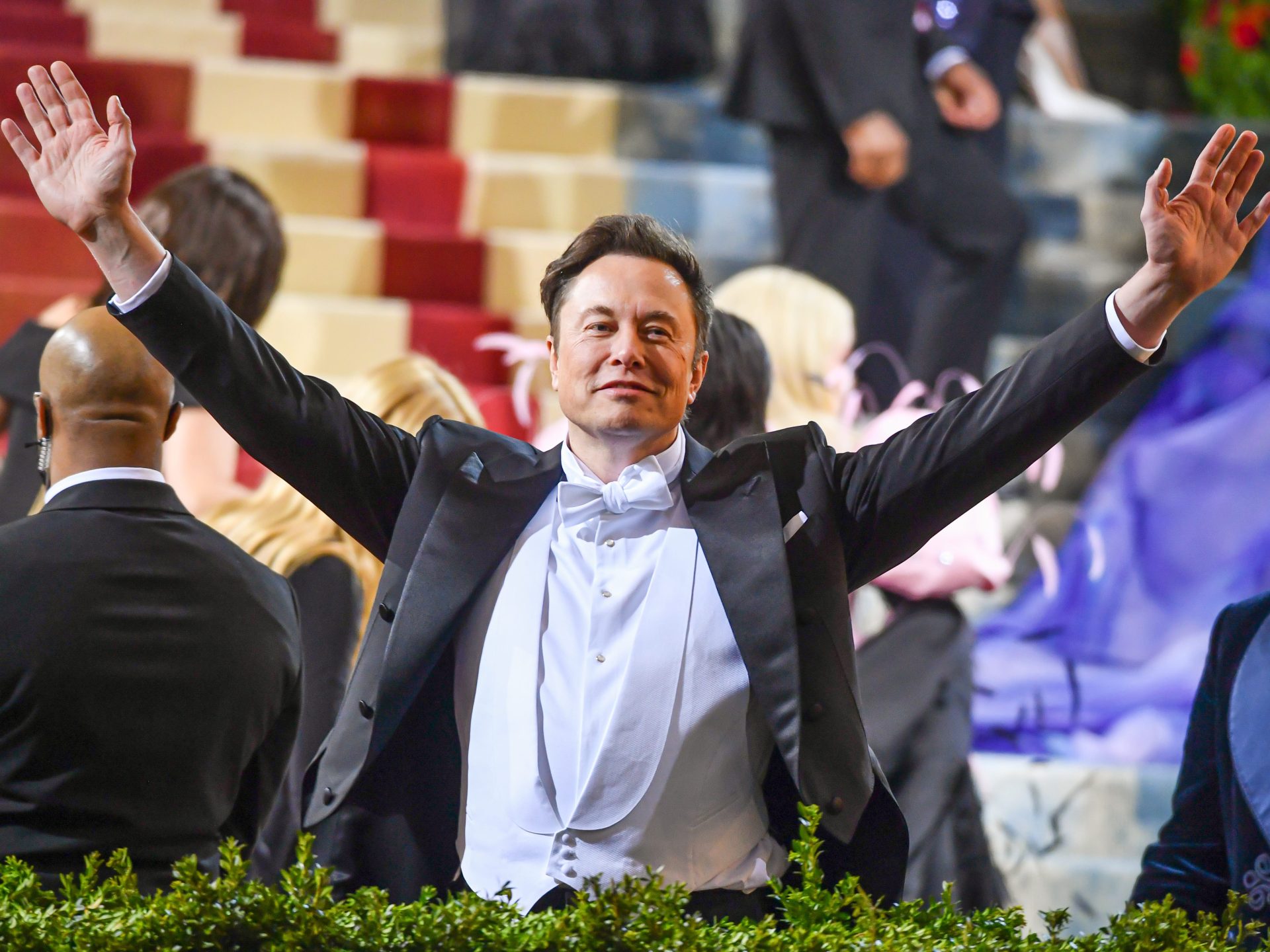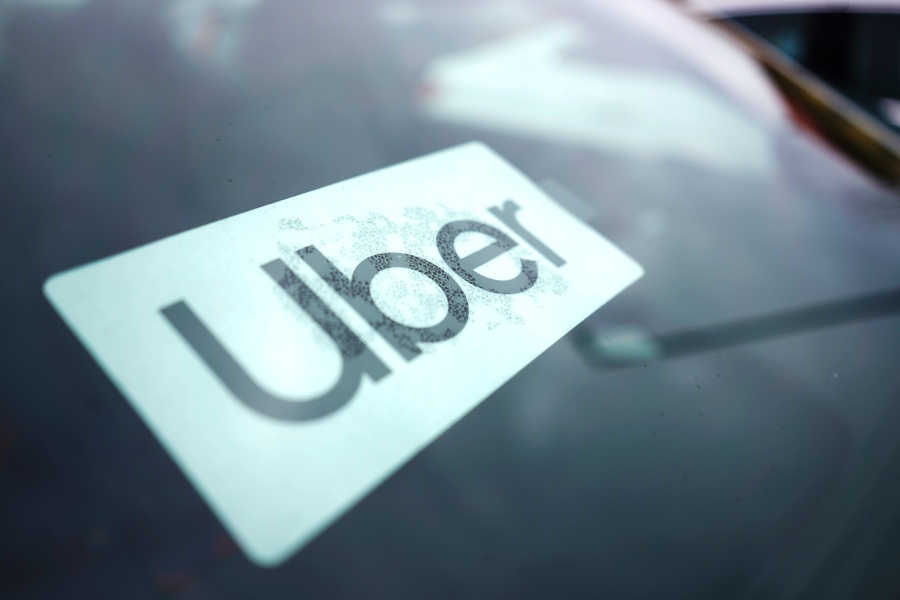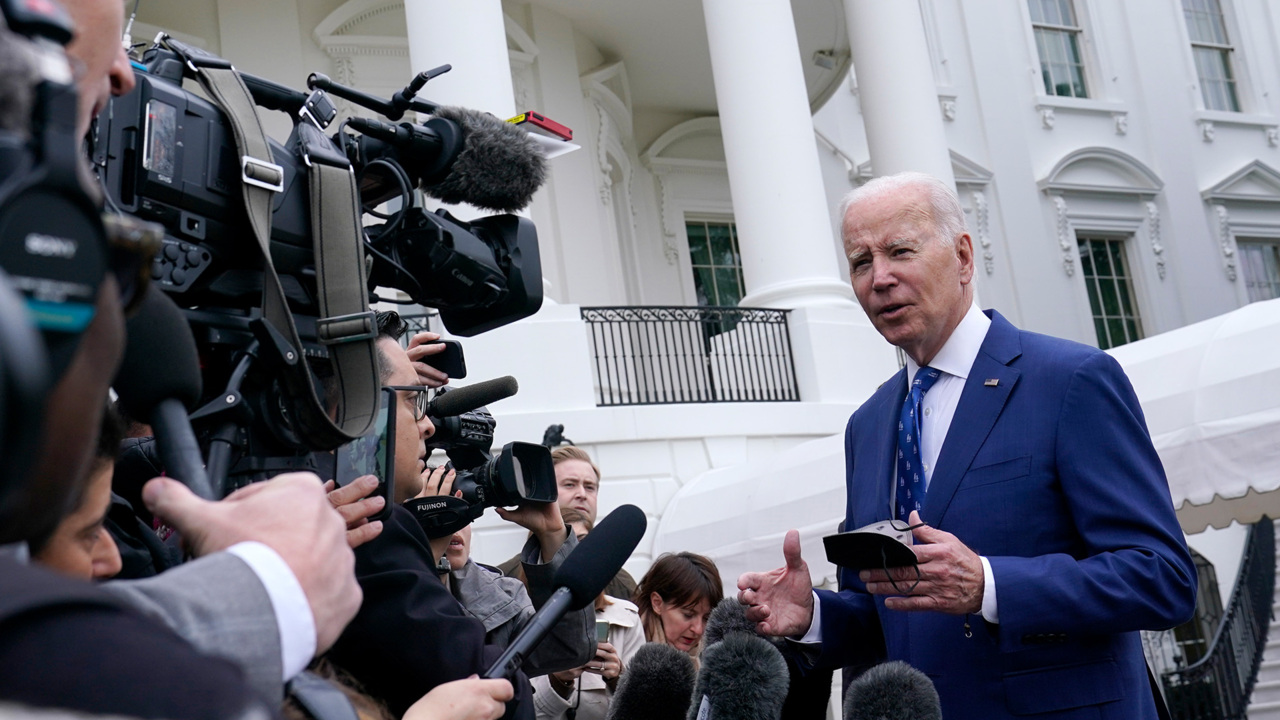Well+Good
Laundry detergent products—necessary as they are to clean clothes and keep them fresh—often carry an environmental price tag. Many are formulated with chemical ingredients that are potentially harmful to our health and the environment and come packaged in plastic, a major source of pollution. Consumers hoping to find more eco-friendly cleaning products in order to lighten their load on the planet might have considered replacing those large plastic flagons of laundry detergent in favor of greener alternatives. One product that presents itself as a solution are “eco-friendly” laundry detergent sheets, which are purported to contain fewer ingredients that pollute air and waterways and less plastic.
What are laundry detergent sheets?
Also known as laundry detergent strips or squares, “laundry detergent sheets are highly concentrated, liquid-less detergents designed to replace the typical liquid, powdered, or pod laundry detergent options,” according to Sydney Swanson, a science analyst at the Environmental Working Group (EWG).
Laundry detergent sheets are pre-measured to ensure you aren’t using too much detergent—a common laundry mistake. Typically, one strip is enough for a regular load of laundry, and it will dissolve in the washing machine. Some variations can also serve as dryer sheets, so you don’t need to purchase any, saving you extra money and storage space.
Do dissolvable laundry detergent sheets work?
According to Patric Richardson, host of the Discovery+ show The Laundry Guy and author of Laundry Love and How to Love Your Laundry, the performance of laundry detergent sheets will vary from brand to brand. “You have to try a few options to find one that works for you,” says Richardson. To determine the general quality of laundry detergent sheets before you buy them, you may also find it helpful to read honest reviews written by everyday people on websites or blogs.
Are “eco-friendly” laundry detergent sheets really better for the environment?
In many ways, laundry detergent sheets live up to their eco-friendly credentials. You will commonly find them packaged in small cardboard boxes. “This packaging is often chosen intentionally by companies to avoid contributing to the ongoing plastic pollution crisis,” says Swanson. What’s more, they are usually smaller and lighter weight than the usual dumbbell-heavy detergent bottles, requiring less fuel to ship—and thereby, reducing environmental impact.
However, it’s important to consider that most laundry detergent sheets contain polyvinyl alcohol, or PVA, a water-soluble plastic. While PVA is fully biodegradable, the process can only take place under very specific conditions. Wastewater treatment facilities in the US typically cannot meet these conditions, according to a study published in the International Journal of Environmental Research and Public Health. “PVA can end up back in the environment after the wash cycle, and though some have debated the biodegradability of PVA, EWG does not consider it to be a persistent chemical,” says Swanson—a trade-off for the convenience laundry detergent sheets can offer you.
As with many other cleaning products, some laundry detergent sheets on the market do not fully disclose their ingredient mixture—and for Swanson, transparency is important. “All consumers should know exactly what is in their products so they can make the best decision for their health and the environment,” she says.
What To Look for in an Eco-Friendly Laundry Detergent
Regardless of whether you want to buy laundry detergent sheets, there are a few important features to look for if you want your purchase to be as eco-friendly as possible.
Packaging
First, opt to purchase laundry detergent that is packaged in “cardboard, glass, or aluminum,” says Swanson. “Consumers can even look for refill shops where they can bring their own container to fill with laundry detergent.”
Weight
Secondly, you might also want to purchase a detergent—be it powdered, solid, or ultra-concentrated—that’s marketed to weigh less per load. “These options may use less energy to ship,” she says. For context, a 115-ounce bottle of conventional liquid laundry detergent (which amounts to 60 loads of laundry) might weigh a little over seven pounds. Conversely, a typical box of laundry detergent sheets will weigh much less at under one pound.
Ingredients
You might also want to consider the ingredients list. As a general rule, Richardson says to look for products that use ingredients with names that you can pronounce. “You should be able to read the ingredients and be able to pronounce them and know what they are,” he says. “The more complicated the ingredient names are, the more complicated the product—and that’s when you start dealing with things that you don’t want.”
Common ingredients you might want to avoid, include methylisothiazolinone and benzothiazolinone, which are “aquatic toxicants,” according to Swanson. Unfortunately, many laundry detergents contain aquatic toxicants, and it might seem impossible to avoid them. But what you can do is select products that have as little of them as possible.
Swanson adds that halogenated organic compounds are harmful to the environment as well as ethoxylated surfactants—“they can be contaminated with high levels of 1,4-dioxane, which also does not readily degrade in the environment.” There’s also quaternary ammonium (or quats), another potential aquatic toxicant that’s often found in laundry detergents that double as fabric softeners.
And while fragrance often leaves our clothes fresher smelling, Swanson says “certain fragrances and synthetic musks can be aquatic toxicants and can also release harmful volatile organic compounds into the atmosphere,” adding, “VOCs can deplete the ozone and directly and indirectly contribute to climate change.” If you want to avoid the harmful impact certain fragrances may have on the environment, consider purchasing fragrance-free products.
Environmental certifications
There is no legal or standard definition of what makes a detergent “eco-friendly,” “biodegradable,” or “non-toxic”—“this ‘greenwashing’ is often just a marketing ploy,” says Swanson. Instead of relying on marketing terms, you can refer to the Environmental Working Group’s Guide to Healthy Cleaning, which provides safety ratings for common household products. The Environmental Protection Agency (EPA) also offers a list of safer products on their Safer Choice website to help consumers narrow down their choices.
Another tip from Richardson? Purchase laundry detergent products from brands that you trust. “Stores that you trust vet their products—and they want you to have great products,” he says. “If it doesn’t work, start asking around for other recommendations.”
Eco-friendlier Laundry Detergent Products
Laundry detergent sheets
If you’re looking for laundry detergent sheets, this option from Beyond are a worthy pick. They come packaged in a cardboard box weighing less than a pound, and the product is a USDA-certified biobased, which means at least 25 percent of its ingredients are derived from renewable sources. It is also septic safe. In addition to all these, it’s free of dyes and chlorine bleach, and it’s completely vegan to boot. However, like most laundry detergent sheets, they’re made with PVA, and according to the EWG website (which gives it a B grade), it contains several aquatic toxicants, including sodium coco-sulfate, cocamidopropyl betaine, sodium C14-16 olefin sulfonate, and lauryl glucoside.
The sheets dissolve in both hot and cold water, and according to multiple Amazon reviews, it effectively lifts stains and leaves clothes clean. “These sheets clean as well as anything I’ve used,” one Amazon reviewer wrote. Another reviewer mentioned the fragrance-free formula (pictured above) is also gentle on the skin. “I have pretty sensitive skin and sometimes eczema flare ups—this hasn’t triggered anything,” they proclaimed. If you crave fragrance, it’s also available in a version with a Fresh Linen scent.
Pro
Convenient and easy to use
Con
Made with PVA
Laundry detergent pods
AspenClean’s laundry detergent pods put an eco-friendly spin on traditional versions. The pods are not only plant-based, vegan, and PETA-certified cruelty free, but they’re also EWG verified and Ecocert certified for being environmentally and socially conscious. If anything, the pods are contained in a film made from PVA material—which, as mentioned, isn’t readily biodegradable.
As you might imagine, the pods are easy to use—just toss one in a regular or high-efficiency (HE) washing machine. A single pod should be more than enough for a regular load of laundry, but you may have to use two pods if you want to tackle stubborn stains or you have a large amount of clothes to clean. Regardless, the brand indicates that it will dissolve at any temperature setting, so you can save on precious energy when you do laundry. The version pictured above is fragrance-free, but one reviewer reported that it “cleans well,” despite its lack of scent, and many other shoppers agreed, too. However, there are two fragranced options available—Lavender and Eucalyptus—which are also EWG verified and come in plastic-free packaging.
Pro
EWG verified
Con
Made with PVA
Laundry detergent powder
Simple and straightforward, Ingredients Matter’s laundry detergent powder has a short ingredient list—consisting of just 11 ingredients—plus comes in a recyclable cardboard box. The powder is EPA Safer Choice certified, Leaping Bunny certified for being cruelty free, and the EWG also gave it an A grade. What’s more, it’s safe to use for both regular and HE washing machines, and is even septic safe.
According to multiple reviewers, it can make quick work of removing stains and odors. “It cleans well, leaves no residue, and leaves clothes smelling fresh,” one reviewer wrote. While tough on stains, the laundry detergent powder is gentle on skin, thanks to its hypoallergenic formula. Plus, a little of the stuff goes a long way. You’ll get approximately 72 loads with just one 36-ounce box. The version featured above is free of fragrance, but you can also purchase it in Lavender and Lemongrass scents.
Pro
EPA Safer Choice certified
Con
Messy to use, according to some reviewers
Plastic-free laundry detergent tablets
Plastic-free laundry detergent isn’t a pipe dream: From its compostable paper packaging to the tablets themselves, there is no plastic present in Blueland’s laundry detergent. The tablets are made without fragrances, dyes, bleach, and other harsh chemicals, and are even vegan and gluten, soy, and nut free. They boast an EPA Safer Choice certification, and they’re also Cradle to Cradle certified, Leaping Bunny certified, and EWG verified. All that, and they’ve been independently tested to perform just as well as conventional laundry detergents.
Reviewers have attested that the product lives up to claims, working wonders to remove stains and unwanted odors. “They seem to get my clothes as clean as anything you can buy in a store, only there’s no big plastic jug to throw in a landfill,” one reviewer raved. Plus, the tablets offer the easy convenience of detergent pods, though multiple reviewers mentioned that the tablets aren’t quick to dissolve, if at all. With the Blueland’s laundry starter kit, you’ll receive 60 laundry tablets, along with a steel tin for storage. Refills are also available on their website when you run out. While perfect in almost every way, the EWG points out that the product’s formula contains alcohol ethoxylated C12-14, which unfortunately, is considered an aquatic toxicant.
Pros
EWG verified
EPA Safer Choice certified
Con
Doesn’t dissolve well, according to some reviewers
4 Ways To Make Laundry Day More Eco-Friendly
1. Use less detergent
Regardless of which laundry detergent you use, Richardson says to use less of it. “You don’t need as much as is very often suggested, and using less product allows it to last longer,” he says. When you aren’t purchasing laundry detergent as often, you’re also doing your part to avoid unnecessary shipping.
2. Do less laundry
“Quite frankly, I wear my jeans nine or 10 times before I wash them,” says Richardson. “The ultimate act of being sustainable with your laundry is just doing it less.” You’ll be using less water, energy, and less product. A win-win-win situation.
3. Wash with cold water
“Laundering in cold water can have a big impact on reducing one’s environmental footprint,” says Swanson. “A large portion of the energy used by a washing machine during the laundering process goes to heating the water.”
When washing clothes in the cold water, opt to use a cold-water detergent for the best clean. Consider pre-treating stains, too. “I’m a huge fan of vinegar to remove stains,” says Richardson. “I just treat stains with a mixture of equal parts white vinegar and water—and for a lot of things, that’s enough.”
4. Air-dry clothes when possible
If the option is available to you, opt to hang-dry clothes instead of baking them in the dryer. “It’s not only better for the environment, but also better for clothes,” Richardson says. “The safer we are on our clothes, the longer they last—and that’s a huge part of sustainability.”
Frequently Asked Questions
Are laundry detergent sheets cheaper than liquid laundry detergent?
Laundry detergent sheets can cost anywhere from $15 to $20 for boxes of 30 or 60 sheets (or $2 or $3 per laundry load), which is comparable to what you might pay for conventional liquid laundry detergents.
What can I use instead of laundry detergent sheets?
There are a wide range of alternatives—like powders, tablets, and liquids—to laundry detergent sheets. As mentioned, if you’re concerned about the environmental impact your product might have, select an option that’s lightweight, packaged in recyclable materials, and made with fewer (and potentially harmful) chemical ingredients.












